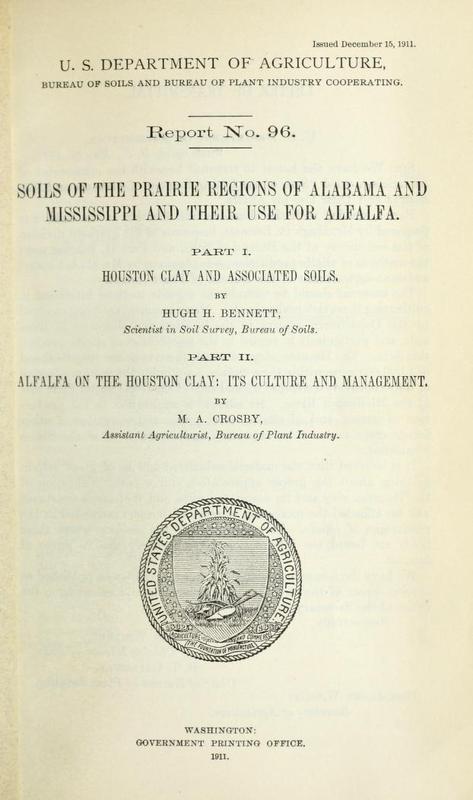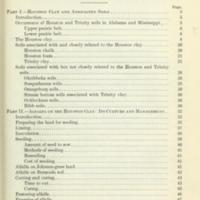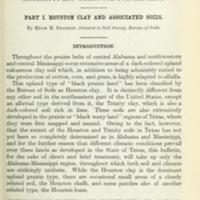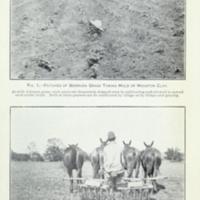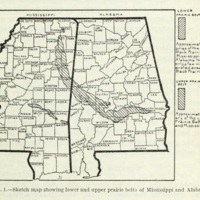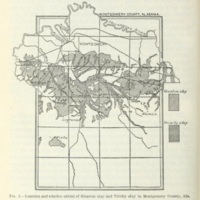Soils of the Prairie Regions of Alabama and Mississippi and Their Use for Alfalfa
Date
1911
Excerpt
Throughout the prairie belts of central Alabama and northwestern and central Mississippi occur extensive areas of a dark-colored upland calcareous clay soil which, in addition to being admirably suited to the production of cotton, corn, and grass, is highly adapted to alfalfa.
This upland type of "black prairie land" has been classified by the Bureau of Soils as Houston clay. It is distinctly different from any other soil in the southeastern part of the United States, except an alluvial type derived from it, the Trinity clay, which is also a dark-colored soil rich in lime. These soils are also extensively developed in the prairie or "black waxy land" regions of Texas, where they were first mapped and named. Owing to the fact, however, that the extent of the Houston and Trinity soils in Texas has not yet been so completely determined as in Alabama and Mississippi, and for the further reason that different climatic conditions prevail over these lands as developed in the State of Texas, this bulletin, for the sake of direct and brief treatment, will take up only the Alabama-Mississippi region, throughout which both soil and climate are strikingly uniform. While the Houston clay is the dominant upland prairie type, there are occasional small areas of a closely related soil, the Houston chalk, and some patches also of another related type, the Houston loam.
This upland type of "black prairie land" has been classified by the Bureau of Soils as Houston clay. It is distinctly different from any other soil in the southeastern part of the United States, except an alluvial type derived from it, the Trinity clay, which is also a dark-colored soil rich in lime. These soils are also extensively developed in the prairie or "black waxy land" regions of Texas, where they were first mapped and named. Owing to the fact, however, that the extent of the Houston and Trinity soils in Texas has not yet been so completely determined as in Alabama and Mississippi, and for the further reason that different climatic conditions prevail over these lands as developed in the State of Texas, this bulletin, for the sake of direct and brief treatment, will take up only the Alabama-Mississippi region, throughout which both soil and climate are strikingly uniform. While the Houston clay is the dominant upland prairie type, there are occasional small areas of a closely related soil, the Houston chalk, and some patches also of another related type, the Houston loam.
Title
Soils of the Prairie Regions of Alabama and Mississippi and Their Use for Alfalfa
File(s)
Soils of the Prairie Regions of Alabama Cover.jpg
(image/jpeg)
Soils of the Prairie Regions of Alabama TOC.jpg
(image/jpeg)
Soils of the Prairie Regions of Alabama map 1.jpg
(image/jpeg)
Soils of the Prairie Regions of Alabama map 2.jpg
(image/jpeg)
 An official website of the United States government.
An official website of the United States government.


